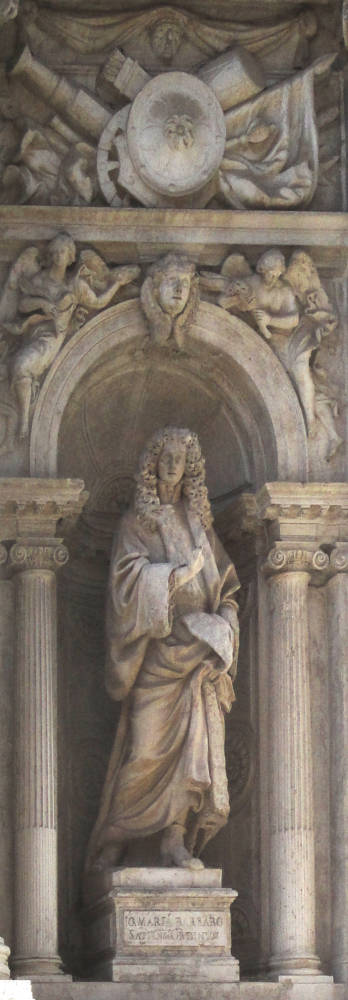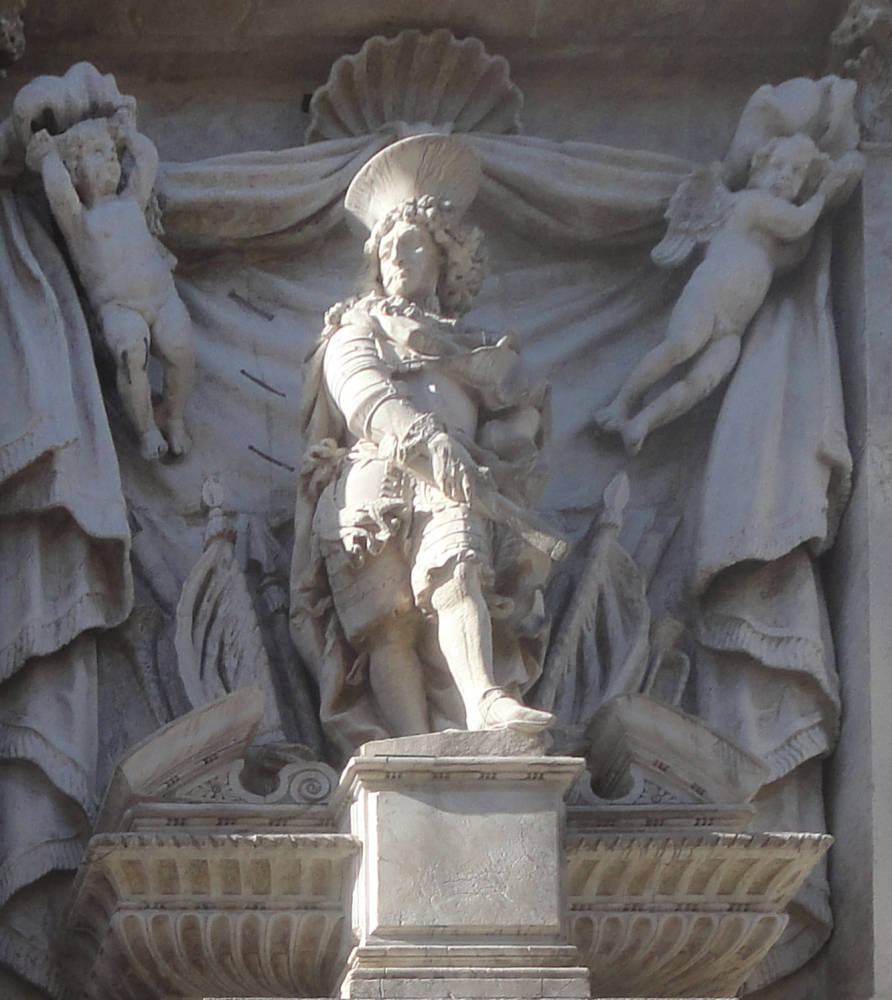Click on images to enlarge them.


In his tourist guide to Venetian architecture at the back of the third volume of The Stones of Venice Ruskin does not even mention the church at all, but instead tells his reader that “it contains one valuable Tintoret, namely: Christ with Sta. Justina and St. Augustin” (11.397), which he proceeds to describe in some detail. He had savaged the church earlier in the volume. The editors of the Library Edition of Ruskin’s works comment that “the church of Santa Maria Zobenigo must have been seen every day by Ruskin, for his house was in its square” (11.148n), and we know as soon as we catch sight of its façade that he must have hated it! Ruskin loathed the kind of worldly pride that undercut the role and supposedly intended message that this church purported to convey. According to him, “The churches raised throughout this period are so grossly debased, that even the Italian critics . . . exhaust their terms of reproach upon these last efforts of the Renaissance builders. The two churches of San Moisè and Santa Maria Zobenigo, which are among the most remarkable in Venice for their manifestation of insolent atheism, are characterised by Lazari, the one as ‘culmine d’ ogni follia architettonica [the culmination of every architectural lunacy’, the other as ‘orrido ammasso di pietra d’ Istria [a hideous mass of Istrian stone]’, with added expressions of contempt, as just as it is unmitigated” (11.148-49).


Left: The “huge statue of a Barbaro in armour, with a fantastic head-dress, over the central door”. Right" One of the “four Barbaros in niches, two on each side of it, strutting statues, in the common stage postures of the period”— possibly “Marinus Barbaro, Senator (reading a speech in a Ciceronian attitude) ”
Ruskin begins his attack on the church by pointing out that “the Church of Santa Maria Zobenigo is entirely dedicated to the Barbaro family; the only religious symbols with which it is invested being statues of angles blowing brazen trumpets, intended to express the spreading of the fame of the Barbaro family in heaven. At the top of the church is Venice crowned, between Justice and Temperance, Justice holding a pair of grocer’s scales, of iron, swinging in the wind. There is a two-necked stone eagle (the Barbaro crest), with a copper crown, in the centre of the pediment” (11.149-50). He mockingly continues, “A huge statue of a Barbaro in armour, with a fantastic head-dress, over the central door; and four Barbaros in niches, two on each side of it, strutting statues, in the common stage postures of the period,—Jo. Maria Barbaro, sapiens ordinum; Marinus Barbaro, Senator (reading a speech in a Ciceronian attitude); Franc. Barbaro, legatus in classe (in armour, with high-heeled boots, and looking resolutely fierce); and Carolus Barbaro, sapiens ordinum: the decorations of the façade being completed by two trophies, consisting of drums, trumpets, flags, and cannon; and six plans, sculptured in relief, of the towns of Zara, Candia, Padua, Rome, Corfu, and Spalatro” (11.150).


Left: Bas relief of a naval battle. Right: The “huge statue of a Barbaro in armour, with a fantastic head-dress, over the central door.”
![]()
More of Ruskin's Venice
- St. Mark’s Cathedral
- The Palazzo Ducale, Venice
- The Scuola de San Rocco
- On the Grand Canal
- Leaving the Grand Canal
- On the way to Venice from the mainland
- Venice: Details and Corners
Photographs 2019 and 2020. [You may use these images without prior permission for any scholarly or educational purpose as long as you (1) credit the photographer and (2) link your document to this URL in a web document or cite the Victorian Web in a print one.]
Bibliography
Ruskin, John. The Works. Ed. E. T. Cook and Alexander Wedderburn. “The Library Edition.” 39 vols. London: George Allen, 1903-1912.
Wurman, Richard Saul [and Patricia Schultz]. Florence Venice Milan Access. New York: HarperCollins, n.d.
� �
Last Modified 30 March 2020